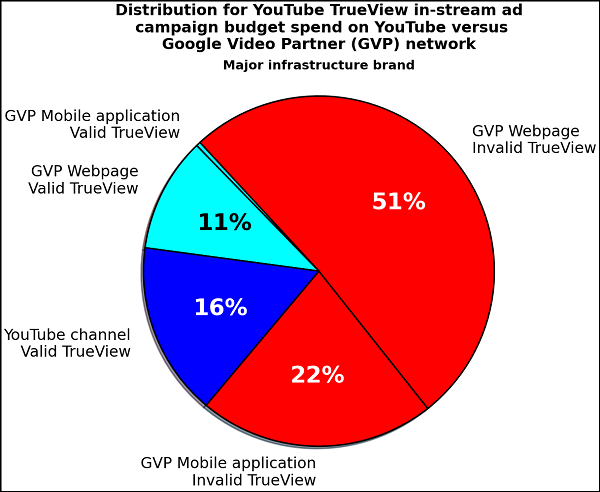This could be a significant problem for Google, and for advertisers that have been using its video ad campaigns.
According to new analysis, conducted by ad intelligence firm Adalytics, around 75% of ads purchased through Google’s TrueView video campaign offering have been displayed on surfaces that do not meet Google’s standards for ad placement, in which Google promises specific parameters for the viewer experience and exposure within these campaigns.
As per Adalytics’ findings:
“For years, significant quantities of TrueView skippable in-stream ads, purchased by many different brands and media agencies, appear to have been served on hundreds of thousands of websites and apps in which the consumer experience did not meet Google’s stated quality standards. For example, many TrueView in-stream ads were served muted and auto-playing as out-stream video or as obscured video players on independent sites. Often, there was little to no organic video media content between ads, the video units simply played ads only.”

As Adalytics notes, Google’s standards for TrueView video campaigns include specific parameters around qualified ad views, based on exposure across various platforms.
As explained by Google:
“TrueView gives advertisers more value because they only have to pay for actual views of their ads, rather than impressions. Viewers can choose to skip the video ad after 5 seconds. If they choose not to skip the video ad, the YouTube video view count will be incremented when the viewer watches 30 seconds of the video ad (or the duration if it’s shorter than 30 seconds) or engages with your video, whichever comes first. Video interactions include clicks to visit your website and clicks on call-to-action overlays (CTAs).”
Because of this higher engagement threshold, TrueView campaigns have been a popular option among bigger spending brands, but if this new analysis is correct, those businesses have not been getting what they’ve paid for in using this approach.
According to the Wall Street Journal, that could end up costing Google billions in refunds, while also significantly harming the credibility of its ad business. It’s a major discovery, which brings into question all of Google’s ad offerings, and it’ll be interesting to see how the many advertisers respond, and how Google looks to explain the findings.
The data once again highlights questions about online ad analytics, and what qualifies as a valid ‘view’ within this context. Twitter, as another example, has come under scrutiny of late due to its counting of video views for its in-tweet listings, with a ‘view’ in this context ticking over once a second is played on screen.
The variance in how platforms measure such has led to confusion over what this stat even means, though in this specific context, Google has communicated very clearly that a higher level of engagement is required to trigger a view for these campaigns.
YouTube’s TrueView has also been assessed by third-party analytics firms, and given the all-clear for its methodology and process. If these findings are correct, all of this could come under question, which could lead to a whole new approach to video view measurement and transparency – as well as significant penalties for Google as a result.
We’ll keep you updated on any progress.



